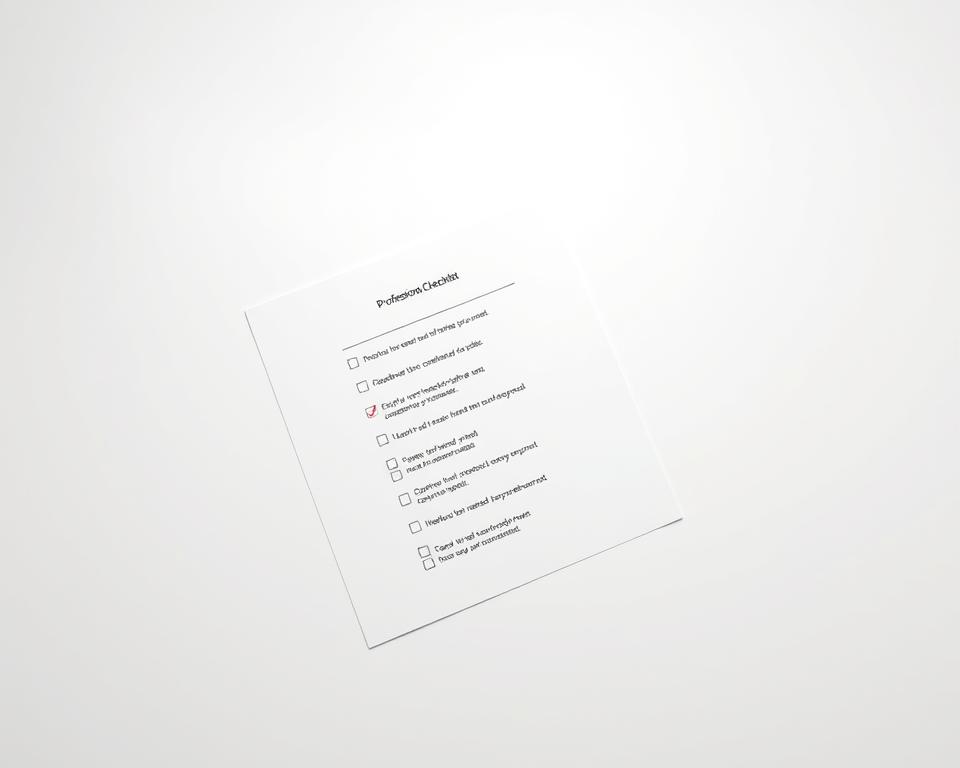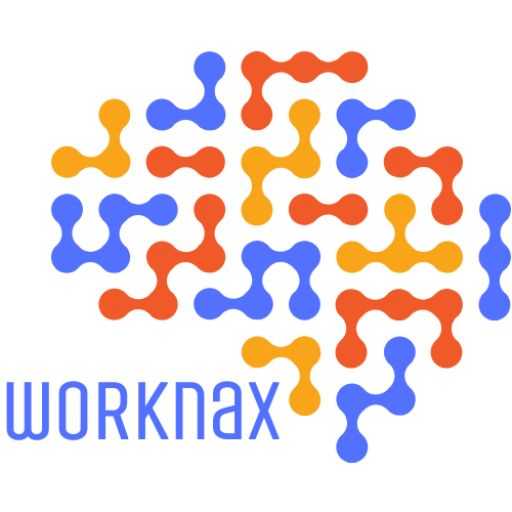Anúncios
professional skills checklist gives you a clear way to boost your career now, not promises of instant success.
The U.S. job market tightened in early 2025, so small, steady moves matter more than big overhauls. SHRM data shows more applicants for fewer roles, and recruiters note that communication tops the list of hireable traits because it speeds work and builds influence.
This guide focuses on short, repeatable steps you can try in 20 minutes. Pick two areas, add one micro-habit per area, and review progress each Friday. You will work on communication, teamwork, time use, problem solving, adaptability, emotional intelligence, leadership, and customer focus.
Expect steady, realistic growth. This is a guide, not a guarantee. Start small today, track examples and metrics, and you’ll build habits that lead to clearer emails, faster decisions, and stronger results in your next job or promotion.
Introduction: Why a professional skills checklist matters in today’s U.S. job market
Hiring tightened fast in 2025, and that change rewrites what counts in your career progress. SHRM (March 2025) reports more applicants chasing fewer roles, so clarity and consistency at work now shape who gets noticed.
Employers want evidence that your actions drive outcomes—not just a degree. edX (July 30, 2025) highlights communication, adaptability, teamwork, problem solving, time management, leadership, emotional intelligence, learning aptitude, and customer focus as top differentiators.
Turn vague goals into weekly actions. Pick two skills, set one measurable action for each, and review progress each Friday. Capture quick before/after snapshots like an edited email or meeting notes to show real gains.
- More applicants for fewer jobs raise the bar for clear results and reliable teamwork.
- Show concrete examples: on-time delivery, clearer updates, and smoother meetings.
- Use a simple cadence: choose two focuses, try one micro-action per focus, and review outcomes weekly.
Small, sustainable changes help you build consistency during busy cycles. Align actions with business priorities so improvements are visible to hiring managers and boost your chances for new opportunities in your field.
Understanding professional, soft, and technical skills
Distinguishing task-focused know-how from people-focused behaviors helps you map progress.
Soft skills are behaviors that shape how you work with others in the workplace. Examples include listening, punctuality, follow-through, and clear communication. These help you build trust with people and keep projects moving.
Technical skills are task-specific abilities often learned in classes or on the job. They include things like SQL queries, bookkeeping entries, data analysis, or operating production equipment. Employers use these to judge if you can do the job’s core tasks.
How they combine and transfer
Professional ability blends soft skills with strategic behaviors such as time planning, prioritization, and basic management skills. For example, a nurse calms a patient (soft) while performing a procedure (technical).
- Write three technical skills and three soft skills, then note one outcome change for each.
- Scan three job posts and underline repeated skills to map role needs across industries.
- Each month, practice one soft skill and one technical skill and tie both to a measurable result.
Employers evaluate not only whether you can do a task, but whether you can do it with others under deadlines and real constraints. That combination is what makes skills portable across industries and useful in any job.
Communication and interpersonal skills you can apply this week
Try one small change to how you write and speak this week, and you’ll notice fewer follow-ups and faster decisions. Use practical templates below to tighten emails, lead clearer meetings, and handle friction with less stress.
Written clarity: Emails, briefs, and updates that reduce errors
Lead with the action, deadline, and owner in the first two lines. Keep each message to one primary ask.
- Email template: Two-line opener: “Action — [what]. Due — [date]. Owner — [name].” Then 3 bullets for details.
- Briefs: Add a “Context and objective” paragraph (1–2 sentences) to reduce back-and-forth.
- Weekly habit: Rewrite one outgoing email for concision and tone; note reply speed.
Verbal impact: Meetings, presentations, and active listening
Use a two-minute pre-meeting checklist: key outcome, decision owner, timebox, and speaker order.
- Swap text-dense slides for one message per slide and a simple visual.
- After meetings, send a 3-bullet summary with next steps and due dates within 15 minutes.
- Active listening: Try “reflect‑label‑ask”: reflect their point, label the concern, ask one clarifying question.
Interpersonal finesse: Building rapport and resolving friction
Open 1:1s with one genuine question about the other person’s constraints or goals. Take a note and follow up next time.
“Communication tops employability because it speeds collaboration and builds influence.”
To de‑escalate, agree on the shared goal first. Then propose two options and ask which is closer to that goal.
- Keep a small wins log: record when clearer communication prevented problems or saved time.
- Use those examples in your next job review or application to show tangible impact.
Emotional intelligence essentials for everyday work
Noticing your feelings early lets you choose responses that keep projects on track.
Emotional intelligence means spotting your emotion, managing your response, and reading others so tough situations don’t derail results.
Self-awareness and self-management under pressure
After meetings, use a 3-minute note: trigger, feeling, behavior, impact, and one tweak to try next time. This builds quick self-awareness you can act on.
Before high-stakes talks, try box breathing: inhale four, hold four, exhale four. Repeat twice to steady your body and calm your mind.
Empathy and social skills to strengthen teams and clients
Ask the “seek specifics” question: “What would a great outcome look like for you?” Then repeat it back to confirm you heard the other person.
- Set micro-commitments (e.g., “I’ll send the draft by 3 p.m.”) and keep them to earn trust with people you rely on.
- When things go wrong, separate intent from impact: acknowledge the impact, then share intent and a fix.
- Delay a heated reply by 10 minutes and draft three solution options before responding.
“Emotional intelligence builds stronger rapport with internal and external partners.”
Track one monthly EI metric: one fewer miscommunication loop, one faster conflict resolution, or one improved client interaction. Small routines lead to steadier leadership and better outcomes in everyday workplace situations.
Problem solving and critical thinking under real constraints
When choices feel constrained, a clear frame helps you find the fastest path forward. Start with a one-sentence problem that names who is affected, the impact, and the main constraint. This stops you from leaping to solutions.
Define, test, and decide
Define: Write one-line problem statements such as “Our customer can’t complete checkout, lowering revenue by X, limited by dev hours.”
Challenge assumptions: List top assumptions and label each “prove” or “disprove.” Pick one quick test that reduces risk early in the project.
- Run a tiny experiment: A/B a message, pilot with five users, or timebox a prototype.
- Use a simple decision matrix (impact vs. effort) to choose one option now, one later, and one to drop.
- For recurring problems, ask “What changed?” and “Who is affected?” to narrow scope.
Learn fast and share results
Run a 20-minute post-mortem with three prompts: what worked, what didn’t, what to change next time. Store notes in a shared doc so the company can reuse insights.
“Problem solving requires calm thinking and clear experiments.”
Tie each insight to the next step in the project plan and track two indicators: reduced cycle time and fewer rework loops. Use a short “thinking checklist” before major decisions to reduce bias and improve management of trade-offs.
Time management and adaptability when priorities shift
You can protect deep time and still respond quickly when the job changes. Use a few simple rules to set priorities, guard focus hours, and reset plans when new requests arrive.
Prioritize, plan, and protect focus time
Start each week with three must-dos tied to outcomes, not just tasks. Block focus time before meetings fill your calendar.
- Apply the 15-30-15 rule: 15 minutes prep, 30 minutes meeting, 15 minutes follow-up.
- Batch similar tasks to cut context switching and add a shared “focus hours” block.
- Keep a lightweight tracker of estimates vs. actual time to improve future planning.
Responding to change with flexibility and composure
If a new request arrives, do a quick capacity check: ask which existing task should move and confirm the change in writing.
When priorities shift, clarify the new goal, timeline, and definition of done before you restart a task. Build adaptability with a weekly habit: learn one new constraint (tool, policy, or client need) to reduce surprise stress.
Measure success by on-time delivery rate and fewer last-minute scrambles at work.
Teamwork and leadership skills that scale with your role
You earn influence on a team long before you get a title by showing up reliably. Small actions build trust: clear updates, honest timelines, and early risk signals help your team plan and deliver.
Being a reliable contributor and a constructive collaborator
Do what you say you’ll do. When a risk appears, tell the team early and offer one option to reduce it.
Ask, “What does success look like for you?” then adapt your work to help others reach that outcome.
- Keep short status notes: owner, next step, blocker.
- Track two health indicators: response time to requests and issues resolved without escalation.
- Propose small stretch tasks to support development and celebrate progress publicly.
Leading without a title: Coaching, feedback, and accountability
Use a simple feedback pattern: observation, impact, question. Be specific and kind so others can act on it.
Run meetings with a clear agenda, timekeeping, and a summary of decisions and owners before you end.
- Share one resource and one short exercise, then follow up next week.
- Create a weekly promise board with commitments and statuses; invite your team to join.
- In 1:1s, spend five minutes on blockers, then agree one step you’ll take to help.
“Teamwork and leadership grow when you make others’ work easier.”
Customer-centric skills for roles across industries
When you center the customer’s words, you reduce rework and build faster trust. Good listening and clear expectation-setting turn routine interactions into long-term value for your company and the business you serve.
Listening and expectation-setting
Start conversations by stating the goal and constraints. Ask the customer to describe the problem in their own words and repeat it back. This confirms understanding before you offer options.
Set expectations in writing: scope, timeline, and a simple communication cadence. A brief note prevents surprises and gives your company a reference the whole team can use.
Conflict resolution that protects relationships
Stay calm, restate the shared outcome, and offer two realistic options. Ask which choice better serves the customer’s outcome and document the decision.
- Close loops fast: acknowledge issues within hours, give an ETA, and follow through.
- Capture customer language in templates and deliverables to cut revisions.
- Create a lightweight voice-of-customer log with top needs, phrases, and blockers and share patterns with product or operations.
“A customer-centric mindset builds long-term relationships and competitive advantage.”
Measure impact with renewal rates, faster response times, or fewer escalations. After each engagement, send a short recap of wins, gaps, and next steps and ask for one line of feedback to improve future service.
Professional skills checklist
Attach new micro-habits to routines you already do so change feels doable. Start small, measure one outcome, and repeat.
Quick self-audit
Run a 10-minute check: rate communication, teamwork, problem solving, time planning, adaptability, emotional intelligence, leadership, and customer focus from 1–5.
- Note the two lowest scores and pick them as your weekly focus.
- Write one concrete micro-habit for each (example: send meeting notes within 15 minutes; draft a one-line problem statement before solutions).
- Keep the habit tied to a trigger (after standup, after lunch).

Weekly actions and micro-habits
Schedule the habits on your calendar and protect the time. Small, repeatable moves beat big, infrequent pushes.
- Block 10 minutes daily for habit practice.
- Add a Friday review: what worked, what didn’t, one tweak.
- Pair one soft habit (active listening) with one task habit (clear acceptance criteria).
Signals to track: outcomes, feedback, and evidence
Track fewer clarification emails, faster approvals, shorter meetings, and on-time tasks.
- Collect portfolio evidence: before/after email edits, agendas vs. outcomes, a small project metric.
- Use a simple scorecard: two weekly behaviors, two metrics, one lesson. Repeat for four weeks.
- When progress stalls, ask a peer or mentor for feedback and scale the habit down to rebuild momentum.
“Small, measurable actions build momentum and show results over time.”
Showcasing your skills on résumés, LinkedIn, and in interviews
Your résumé, LinkedIn, and interview answers should tell the same concise story about what you delivered and how. Front-load the most relevant job keywords that appear in listings for your target role. Mirror the phrasing used by the industry and employers, but keep language natural and truthful.
Write impact statements with metrics. Use one clear line: outcome, method, and percent or time saved. Example: Reduced onboarding time by 25% by creating a three-step checklist and training the team.
Use STAR for interviews. Briefly state the Situation and Task, then focus on the Action you took and the Result with numbers. Prepare two STAR stories each for communication, problem solving, time planning, and adaptability.
- Pin two to three project artifacts on LinkedIn with a short, results-driven caption.
- Show leadership by describing how you coached a teammate, led a project decision, or owned a risk to resolution.
- Highlight team wins and your specific role to prove collaboration and impact.
Close each story with what you learned and how you applied it later to show development and maturity employers value. Proofread carefully—small errors can undercut strong examples.
“Demonstrate how you handled change, led projects, resolved customer issues, and worked well with coworkers.”
Conclusion
Small, steady practice at work moves your development forward more than occasional big pushes. Pick two areas and add one tiny habit this week. Track short wins like a tighter email, a clearer agenda, or one faster approval.
Soft skills amplify technical results: clearer communication, better time planning, and thoughtful teamwork make projects smoother and more visible to employers. Use mentors, peer coaching, or short courses when you need structure or feedback.
Compare your progress to last month, not others. Keep evidence—email rewrites, agenda snapshots, or faster task turns—to show real growth. For your next step, choose two skills, set one micro-habit each, and schedule practice time this week. Steady learning and ethical effort widen your career options without burning you out.



